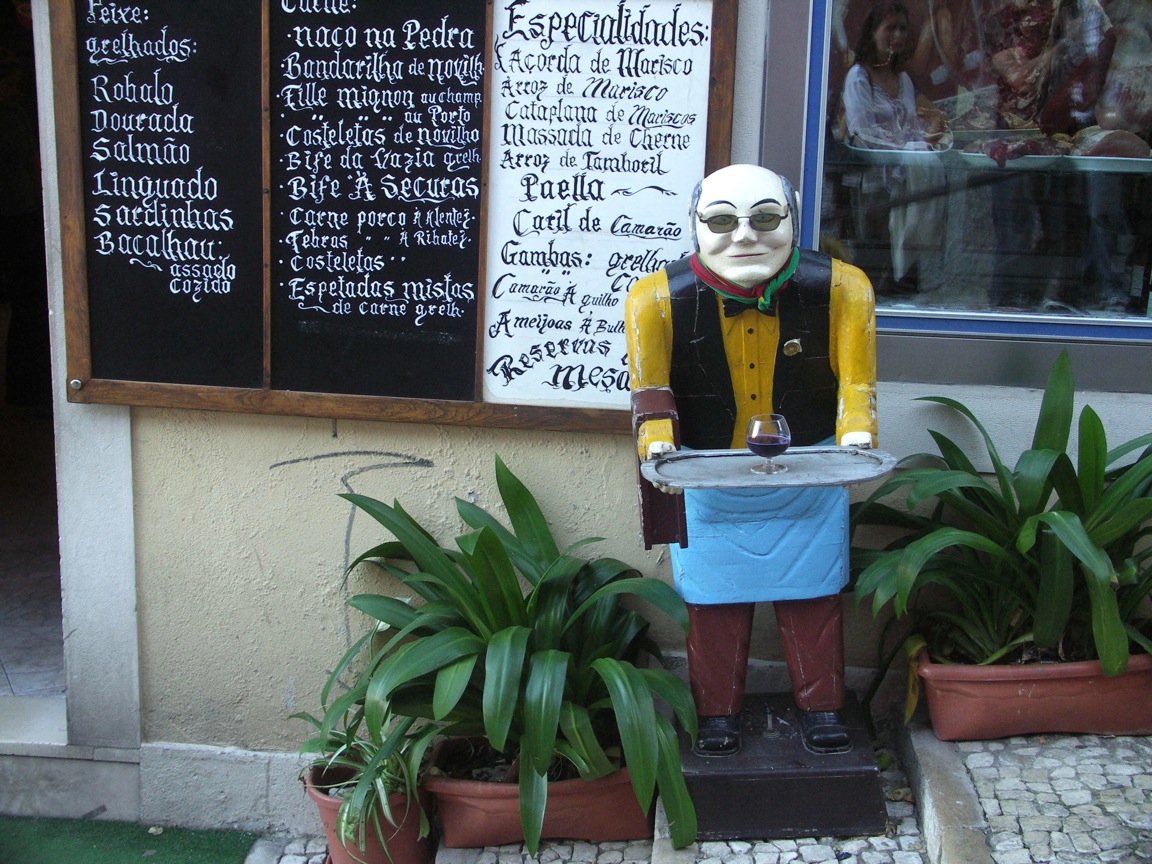MARIANI’S
February
27,
2011
NEWSLETTER
Restaurant Totem, Lisbon, Portugal (2007) by
Galina Stepanoff-Dargery
A Very Proud Announcement! by John Mariani
Cheyenne Frontier Days
by Robert Mariani
New York Corner: Veritas
by John Mariani
Man About Town: Cola's
by Christopher Mariani
Quick Bytes
A VERY PROUD ANNOUNCEMENT!
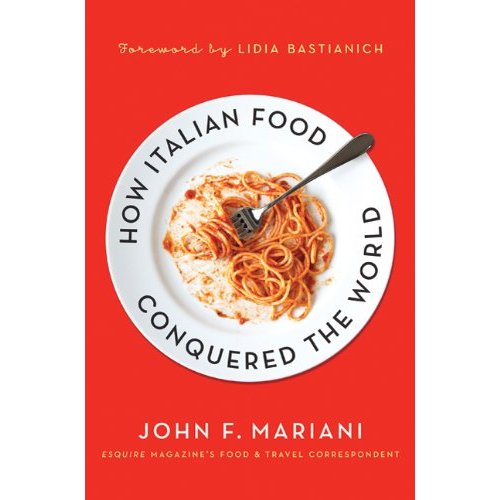 My
new book, How Italian Food Conquered
the World
(Palgrave Macmillan) is a rollicking history of the food and wine
culture of
Italy and its ravenous embrace by the entire world in the 21st
century.
From ancient Rome to Il Boom of
post-war
Italy,
from
Italian
immigrant
cooks
to
celebrity
chefs,
from
pizzerias
to
high-class
ristoranti,
this
chronicle
of
a
culinary
diaspora
is
as
much
about
the world's
changing tastes, prejudices, and dietary fads as about our
obsessions
with culinary fashion and style, full of savory anecdotes about Tony
May, Mario
Batali, Giada de
Laurentiis, Danny
Meyer, Sirio Maccioni, Lidia Bastianich, Michael Chiarello,
Marcella Hazan, Giuseppe Cipriani, and Ernest Hemingway (below), Nigella Lawson, Tony
Vallone, Piero Antinori, Angelo Gaia, Mario Puzo, Frank Sinatra, and
many more, along with restaurants like Delmonico's, G. Lombardi's
Pizzeria, Mamma Leone's, Patsy's, Perino's, Romeo Salta, Bice, Al Moro,
Bagutta, Il
Cantinori, Le Cirque, Barbetta, San Domenico, Valentino's, Marea,
Spiaggia, Cecconi,
Zafferano, and hundreds more.
My
new book, How Italian Food Conquered
the World
(Palgrave Macmillan) is a rollicking history of the food and wine
culture of
Italy and its ravenous embrace by the entire world in the 21st
century.
From ancient Rome to Il Boom of
post-war
Italy,
from
Italian
immigrant
cooks
to
celebrity
chefs,
from
pizzerias
to
high-class
ristoranti,
this
chronicle
of
a
culinary
diaspora
is
as
much
about
the world's
changing tastes, prejudices, and dietary fads as about our
obsessions
with culinary fashion and style, full of savory anecdotes about Tony
May, Mario
Batali, Giada de
Laurentiis, Danny
Meyer, Sirio Maccioni, Lidia Bastianich, Michael Chiarello,
Marcella Hazan, Giuseppe Cipriani, and Ernest Hemingway (below), Nigella Lawson, Tony
Vallone, Piero Antinori, Angelo Gaia, Mario Puzo, Frank Sinatra, and
many more, along with restaurants like Delmonico's, G. Lombardi's
Pizzeria, Mamma Leone's, Patsy's, Perino's, Romeo Salta, Bice, Al Moro,
Bagutta, Il
Cantinori, Le Cirque, Barbetta, San Domenico, Valentino's, Marea,
Spiaggia, Cecconi,
Zafferano, and hundreds more.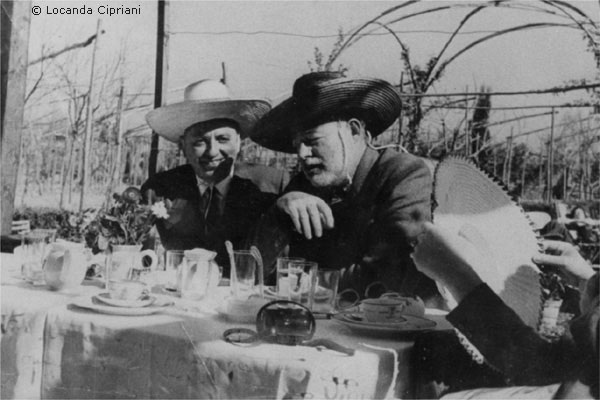
This is a story of how desperately poor Southern
Italians emigrated to the New World and changed its gastronomy,
creating an Italian-American cuisine based on "red sauce," and of the
entrepreneurs who elevated the image and reputation of Italian cuisine
and made it chic at trattorias in Milan, Florence, New York, Los
Angeles, and London. It chronicles how the food media itself so
disgracefully associated Italian food with gangsterism and how
Hollywood bolstered that image in its mob movies. At the same time, it
considers how Hollywood movies of the 1950s like "Roman Holiday" and
"Three Coins in the Fountain," along with Italian movies like "La Dolce
Vita," showed the world another side of Italian sensuality, intimately
tied to its food and wine. The book also details how
Italian wines went from being called "dago red" to "Super Tuscans."
There are also twelve iconic Italian recipes that have become part of
global gastronomy in this century. I hope you enjoy what was, for me, a
true labor of love.
John Mariani
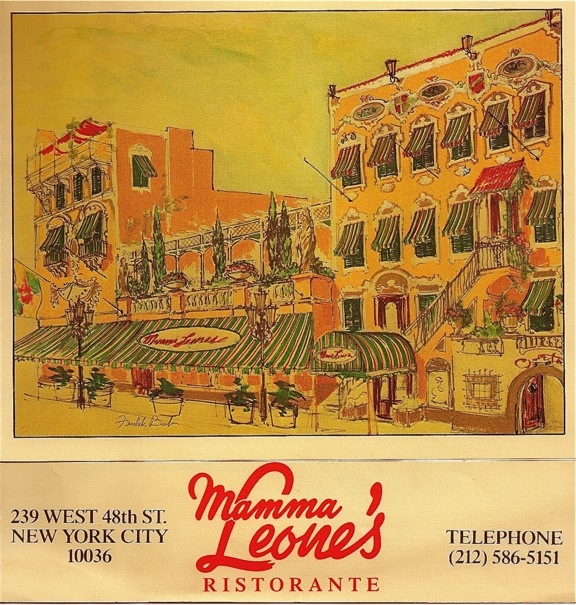 “John
Mariani’s tale of Italian food and its culture is a revealing and very
informative one. Beneath its
covers, within its pages, lies a story of a people who, century after
century,
have sought to share a love of their food and culture and marry the
two so
effortlessly that the end result has not only captivated but `conquered
the
world.”—Lidia Bastianich, host of PBS-TV’s “Lidia’s Italy.”
“John
Mariani’s tale of Italian food and its culture is a revealing and very
informative one. Beneath its
covers, within its pages, lies a story of a people who, century after
century,
have sought to share a love of their food and culture and marry the
two so
effortlessly that the end result has not only captivated but `conquered
the
world.”—Lidia Bastianich, host of PBS-TV’s “Lidia’s Italy.”
“John Mariani’s superb writing has captured perfectly the rise of Italian food throughout history, unraveling the evolution of a cuisine that confused the world before conquering it!”—Tony May, owner of SD26 restaurant in NYC.
"A fact-filled, entertaining history that substantiates its title with hundreds of facts in this meaty history of the rise of Italian food culture around the globe. From Charles Dickens's journey through Italy in 1844 to 20th-century immigrants to America selling ice cream on the streets of New Orleans, Mariani constantly surprises the reader with little-known culinary anecdotes about Italy and its people, who have made pasta and pizza household dishes in the U.S. and beyond."--Publishers Weekly
"Equal
parts history, sociology, gastronomy, and just plain fun, How Italian
Food
Conquered the World tells the captivating and delicious story of
the
(let's
face it) everybody's favorite cuisine with clarity, verve and more than
one
surprise."--Colman Andrews, 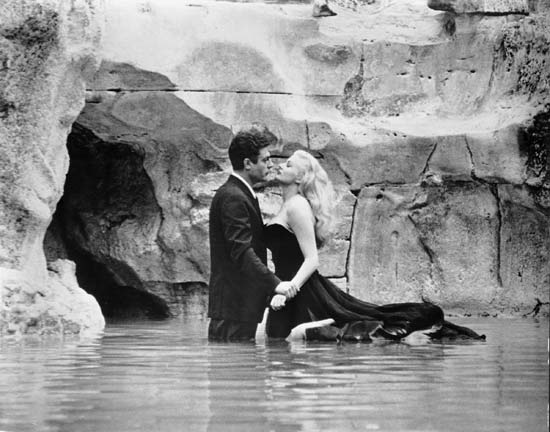 editorial
director
of
The Daily Meal.com.
editorial
director
of
The Daily Meal.com.
"A fantastic and fascinating read, covering everything from the influence of Venice's spice trade to the impact of Italian immigrants in America and the evolution of alta cucina. This book will serve as a terrific resource to anyone interested in the real story of Italian food."--Mary Ann Esposito, host of PBS-TV's Ciao Italia.
"John
Mariani has written the definitive history of how Italians won their
way into
our hearts, minds, and stomachs. It's a story of pleasure over
pomp and
taste over technique."--Danny Meyer, owner of NYC restaurants Union
Square
Café, Gramercy Tavern, and Maialino.
"La Dolce Vita" (1960)
~~~~~~~~~~~~~~~~
by Robert Mariani
"Wyoming is a land of great open spaces with plenty of elbow
room. . . . There are sections of the State where it is said you can
look farther and see less than any other place in the world."--Federal
Writers' Project, Wyoming: A Guide
to Its History, Highways, and People (1941).
Waking
up
just
at
sunrise
back
here
on
the East Coast after a week in Cheyenne,
Wyoming, one of the things I miss is the early morning sound of the
train
whistle, that plaintive, Johnny-Mercer-like note that’s been such a
part of the
mood and feel of this small, unassuming capital city on the prairie
since the
mid-1800’s. 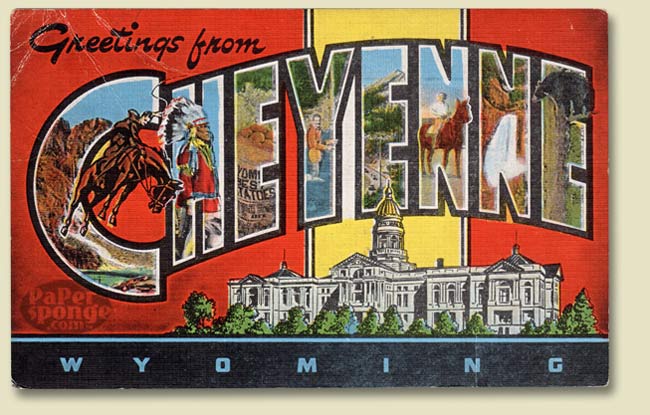 Indeed, were it not for that sound, Cheyenne would never
have
become one of the three largest and most prosperous railroad hubs in
America in
its day.
Indeed, were it not for that sound, Cheyenne would never
have
become one of the three largest and most prosperous railroad hubs in
America in
its day.
I
visited
Cheyenne
to
experience
“Frontier
Days
Celebration,”
their
once-a-year,
all-out
tribute
to
their
wild
and
free
ranging
“Cowboy
Culture.”
It’s
an event
that began in 1897 and has become known as “the daddy of ‘em all.” What
I also
encountered in Cheyenne was a very genuine American way of life— one
that seems
somehow to have lovingly retained much of its early to mid-19th
century, hard-working optimism and charm. Back then, cattle ranchers
from all
over the West drove their herds to Cheyenne, where the Union Pacific
Railroad
transported the cattle to stockyards for slaughter and distribution.
And when
gold was discovered in Wyoming’s Black Hills, Cheyenne’s economy really
started
to gallop and a lot of people got pretty rich.
Thanks
to
a
strong
commitment
to
maintaining
its
“old
west”
pioneer
character,
I
was
happy
to
see
that
the
City
of
Cheyenne still has no sterile
glass-and-steel
skyscrapers. And except for the tastefully opulent State House, I don’t
believe
I saw a single building over 6 or 7 stories high. Much of the
architecture is
Western Victorian, with ornate sand-colored stone mansions and
neighborhoods of smaller,
well-kept homes that still reflect a sense of mannerly elegance. And to
add to
its visitor/business-friendly attitude, there are no parking meters in
the
entire town of Cheyenne; instead, there's a big free municipal parking
garage right in the
heart of the City.
The
downtown
train
depot,
now
a
handsome
museum
devoted
to
the
City’s
fortuitous
relationship
with
the
Union
Pacific
RR,
is
a Victorian masterpiece of
wheat-colored stone. For railroad buffs, the museum is a treasure trove
of
historic memorabilia.
During
the
annual
Cheyenne
Frontier
Days
Celebration
(this
year
to
be
held
July
19
to
31),
the
city
is
bustling
with visitors and residents alike.
There’s an artisans’ market in the center of town, and trolley or free
horse-and-buggy tours of the various historic locations.
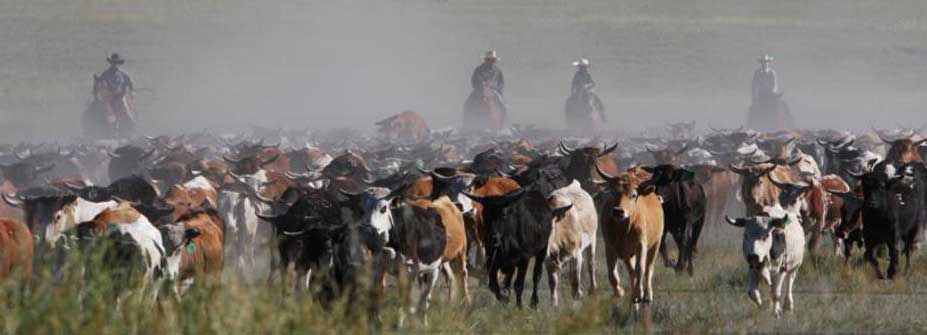
Welcome
to
Horse
Country--Judging from
the parade that kicks off
the 10-day-long Frontier Days event, Cheyenne has an unusually large
population
of equestrians. If you’re not on a parade float or in a marching band
here,
you’re on horseback or driving a horse-drawn carriage. The mayor, the
governor,
the local politicians all walk-trot along the parade route on
beautifully kept
steeds and it’s clear this is definitely not their first time in the
saddle.
Even the 9 or 10-year-old kids here are as at ease on horseback as
“Hoppy,” and
Gene, and Roy and Dale. Wrangler®
jeans seem to be Cheyenne’s trouser-of-choice, and of course, just
about everyone’s
wearing a cowboy hat and boots. There’s a big Wrangler clothing and
equipment
store right downtown, too, where just about every version of cowboy and
cowgirl
attire is available.
Backstage
at
the
Rodeo—Located in
the Northeast corner of the sprawling
Frontier Park Rodeo Grounds is Cheyenne’s Old West Museum.
Open year-round, the
museum features one of the country’s largest collections of beautifully
restored horse-drawn carriages along with an extensive array of Western
art,
saddles, rodeo belt buckles and photos of world champion riders and
ropers.
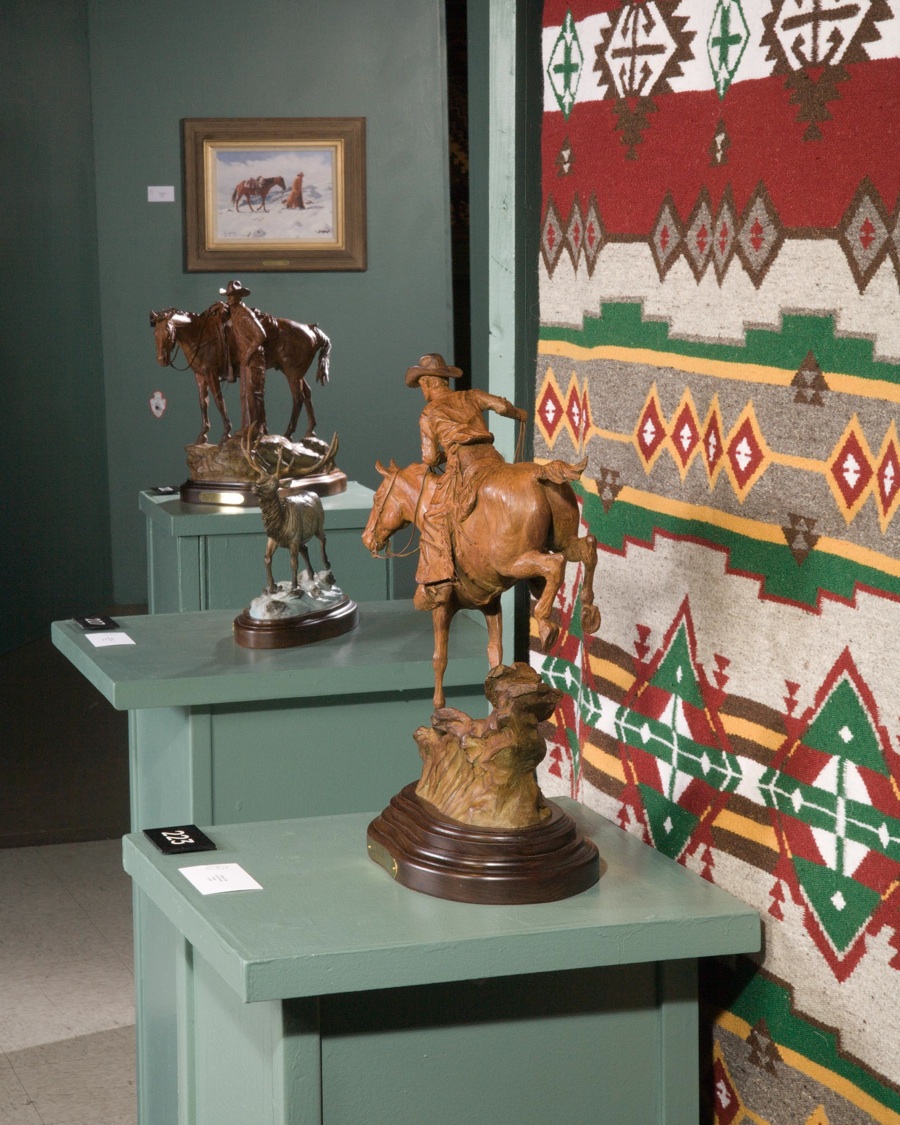 The
slide show about “the world’s most dangerous sport,” bull-riding, will
give you
an even greater appreciation for the skill and courage it takes to
straddle a
two-thousand-pound bull who’s main objective is to trounce you into
prairie
dust. The
Museum
also
offers
a
detailed
photographic
history
of
the
“Cheyenne
Frontier
Days
Celebration”
from
its
humble
beginnings
in
1897
to the world
renowned
pageantry of today’s “Daddy of 'em All ®.”
The
slide show about “the world’s most dangerous sport,” bull-riding, will
give you
an even greater appreciation for the skill and courage it takes to
straddle a
two-thousand-pound bull who’s main objective is to trounce you into
prairie
dust. The
Museum
also
offers
a
detailed
photographic
history
of
the
“Cheyenne
Frontier
Days
Celebration”
from
its
humble
beginnings
in
1897
to the world
renowned
pageantry of today’s “Daddy of 'em All ®.”
Before the
day’s full schedule of rodeo
events begins, you can take a free "Behind the Chutes” guided tour for
a
close-up look at the bucking stock and an explanation of the rules of
the
various rodeo events. All the animals look healthy and well-cared for.
A
bucking bull’s or bronco’s career can last for 7 or 8 years as they’re
trailer-ed around the country on the rodeo circuit. It’s not such a bad
life when you realize that it only takes them a mere 8
seconds to do their “job.” That’s the amount of time a bull or
bronc
has to dislodge their rider once they leave the chute.
During the “Frontier Days Celebration,”
the rodeo grounds also feature plenty of arts and craft tents, and an
Indian
village where Native Americans demonstrate native dances and tell
stories. While
you’re there, be sure to sample one of the made-to-order Indian
tacos,
with chopped lettuce, shredded cheese, ground bison
meat, and served on a tasty soft taco that reminded me of grilled pizza
crust.
“Let ‘er Buck!”—Most
of
us
have
probably
watched
rodeos
on
TV,
but
there’s
no
substitute
for
seeing
one
live.
The
Cheyenne
arena
is
the largest in the world, the sight lines
are good
and the action is non-stop. And there are two LED screens where you can
see
each ride re-played along with some witty commentary by the rodeo
announcers.
(Example: “He stuck on that bull like bubble gum on a bleacher seat.”)
I
was
impressed
by
how
seamlessly
the
entire
day
went
with
absolutely
no
dead
spots
between
the
bucking
events
and
the
roping, barrel racing and trick riding
competitions. I was also impressed with the caliber of the
contestants,
many ranked among the best riders and ropers in the country, including
world champion bull rider J.W. Harris, who on this bright, breezy day,
“made the
whistle” and scored high.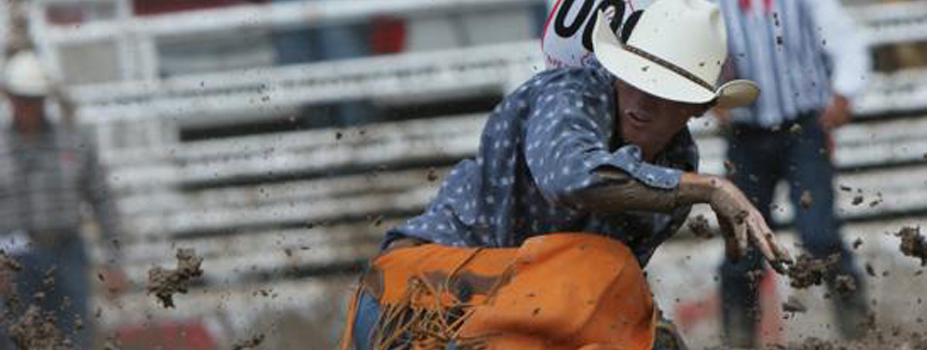
There
are day and night rodeos scheduled daily.
Tickets range from $14 to $24, and I recommend getting seats as close
to the
chutes as possible, either directly across the stadium from them or
behind the
chutes as close to center as possible. In the bucking events, the
action is
almost always within 40 or 50 yards of the chutes. Roping, trick
riding, and
barrel racing take up much more of this king-size venue. The arena’s
enormous,
oblong shape allows riders to get going full speed, and there’s nothing
quite
like watching a beautiful young cowgirl in spangled chaps and
glittering vest
gallop her amazingly well-trained horse the length of the stadium while
she
stands up tall in the saddle.
The
mid-July weather for the week I was in Cheyenne could not have been
nicer, with
the daytime temperatures about 80 degrees and a constantly refreshing
breeze.
Evenings were cool and dry. I was told that this was unusual, however,
and on
previous years in Cheyenne the heat had been in the 90’s. (It should
also be
noted that outdoor rodeos are seldom canceled due to rain.)
The
Frontier
Days’
events
are
always
kicked
off
with
an
evening
concert.
This
year,
the
opening
night
act
was
Kiss. The rest of the
week’s roster included an array of the top stars in country music,
including Brooks & Dun with The Band Perry; Aaron Tippin and
Neal McCoy; Clay Walker; Dierks Bently and Miranda Lambert; Sugarland
with
Danny Gokey; and Alan Jackson with Josh Turner.
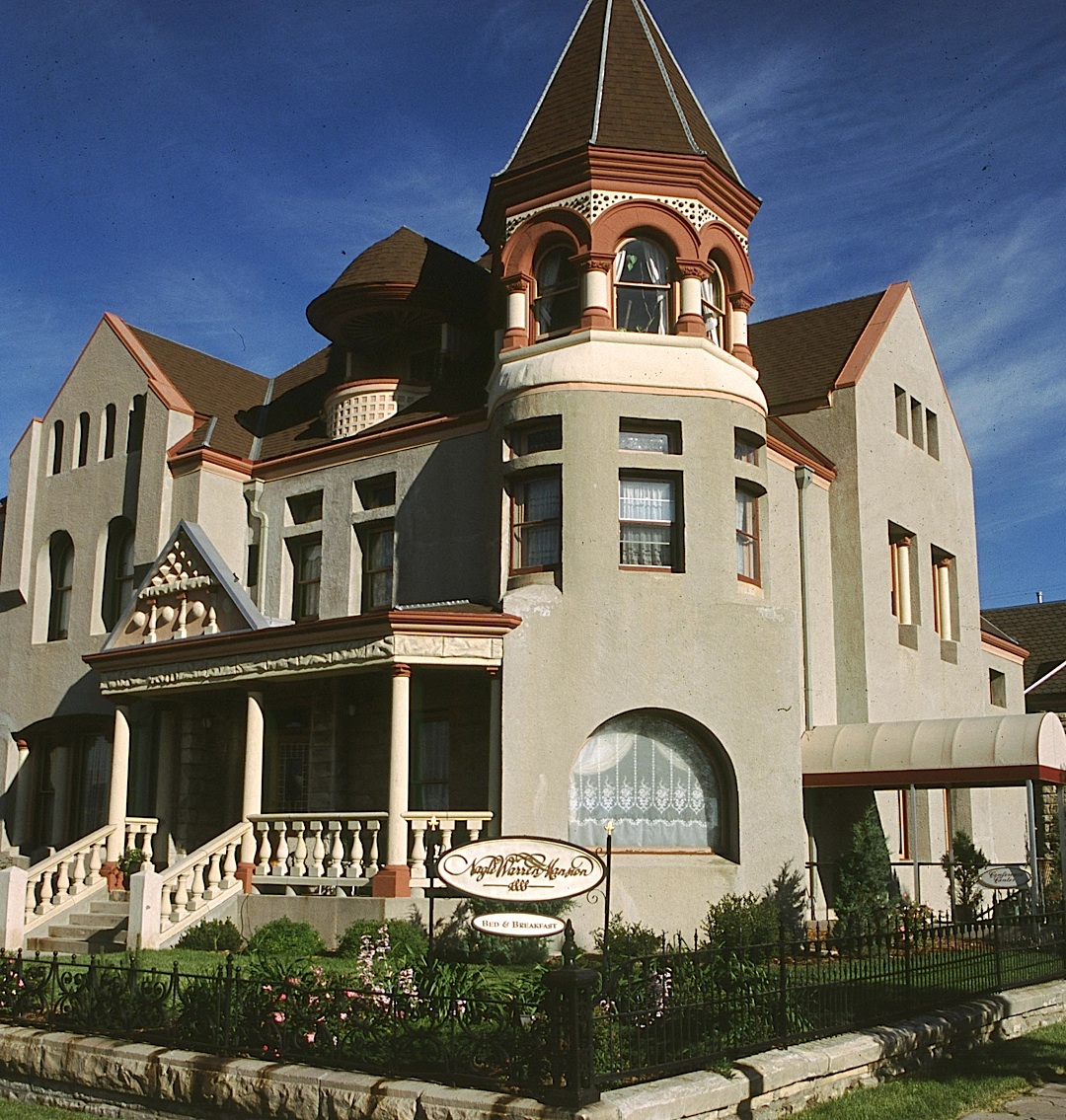 A
Victorian B & B--One of the
prettiest and most centrally
located spots to stay in downtown Cheyenne is the tastefully plush
B&B
known as the Nagle Warren Mansion (left). It
was
built
by
Erasmus
Nagle
in
1888,
when
Cheyenne
was
the
richest
city
of
its
size
in
the
world.
Mr.
Nagle came to Cheyenne in 1867 to engage in the grocery
trade and
rapidly became a key player in the gold mining industry. His wealth is
reflected in the mansion’s opulence. The current owner, Jim
Osterfoss, took
over the mansion in 1997, restored it and turned it into a bed &
breakfast
retaining many original features including the Moorish style tile on
the
vestibule floor; an original Moroccan chandelier; carved leather
ceilings;
original stained glass and crystal windows; and impressive oak woodwork
throughout.
A
Victorian B & B--One of the
prettiest and most centrally
located spots to stay in downtown Cheyenne is the tastefully plush
B&B
known as the Nagle Warren Mansion (left). It
was
built
by
Erasmus
Nagle
in
1888,
when
Cheyenne
was
the
richest
city
of
its
size
in
the
world.
Mr.
Nagle came to Cheyenne in 1867 to engage in the grocery
trade and
rapidly became a key player in the gold mining industry. His wealth is
reflected in the mansion’s opulence. The current owner, Jim
Osterfoss, took
over the mansion in 1997, restored it and turned it into a bed &
breakfast
retaining many original features including the Moorish style tile on
the
vestibule floor; an original Moroccan chandelier; carved leather
ceilings;
original stained glass and crystal windows; and impressive oak woodwork
throughout.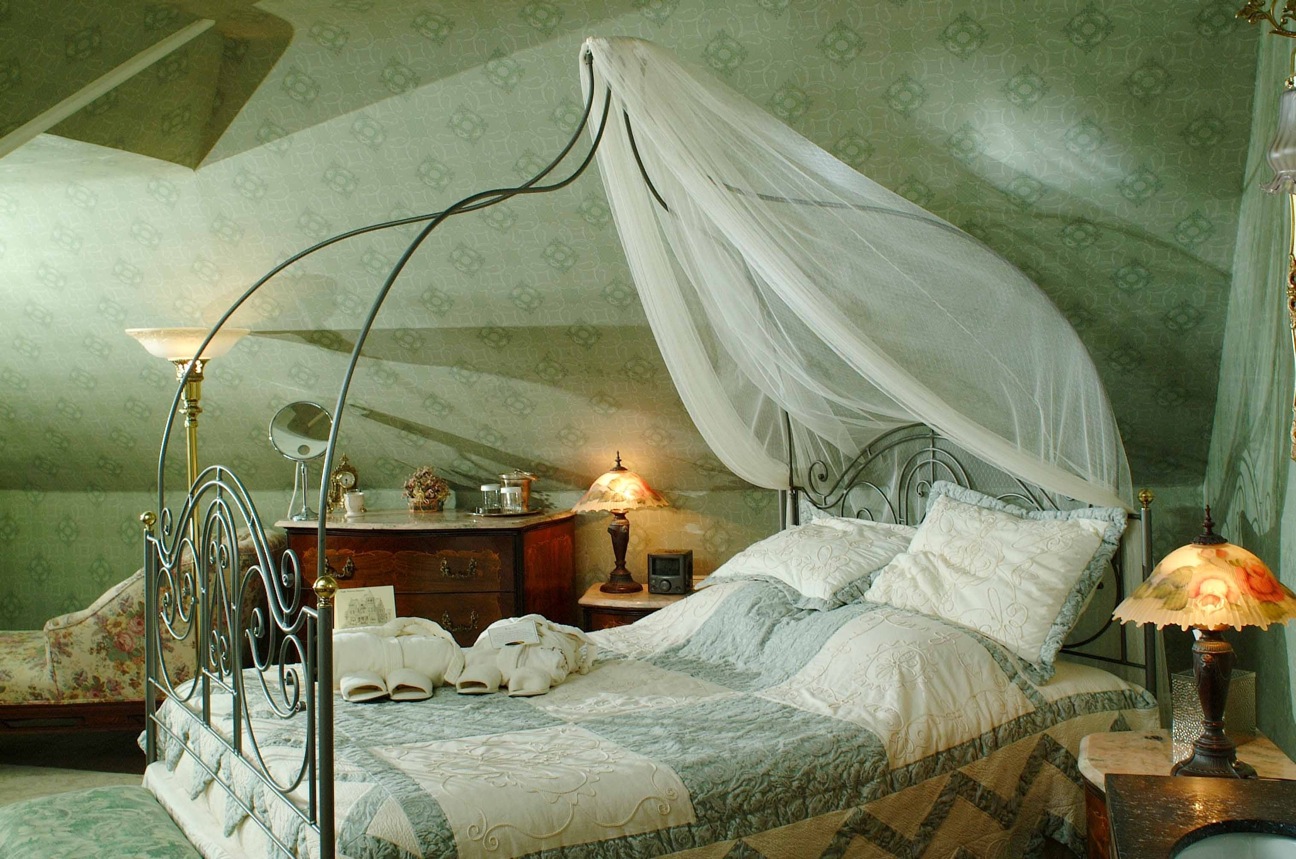 Six
of the individually decorated rooms, including the Barbara Sullivan
Room (right) are located in
the main house and six are in the carriage house,
now connected to the main house. The third
floor tower room (in the main house), the
“snuggery” and the
balcony, are available for guest use, as is the workout room on the
garden
level. The grounds include a hot tub room, patio, fountain, and
gardens.
Six
of the individually decorated rooms, including the Barbara Sullivan
Room (right) are located in
the main house and six are in the carriage house,
now connected to the main house. The third
floor tower room (in the main house), the
“snuggery” and the
balcony, are available for guest use, as is the workout room on the
garden
level. The grounds include a hot tub room, patio, fountain, and
gardens.
Welcome to The Plains--Across
the
street
from
the
historic
Union
Pacific
Depot
stands
The
Plains Hotel. It’s
a short ride from the rodeo arena and just 5 stories high. The Plains
Hotel is
an up-dated remnant evoking the hay day of Cheyenne’s prosperous
“railroad
days.” First opened in 1911, the Plains’ lobby and rooms have a
definite mid-19th
Century elegance. One can easily imagine tired, dusty cowpokes fresh
off the
trail sauntering into the Hotel’s classy tile-floored lobby and
thinking
they’ve fallen right into the lap of luxury. By today’s standards, The
Plains
may seem dated, which is its charm. The lighting is subdued and
somewhat
replicates the romantic mood that the Hotel’s original gaslights might
have
cast. The rooms are spacious and have all the amenities, but feel
somewhat
austere by 21st Century
standards.
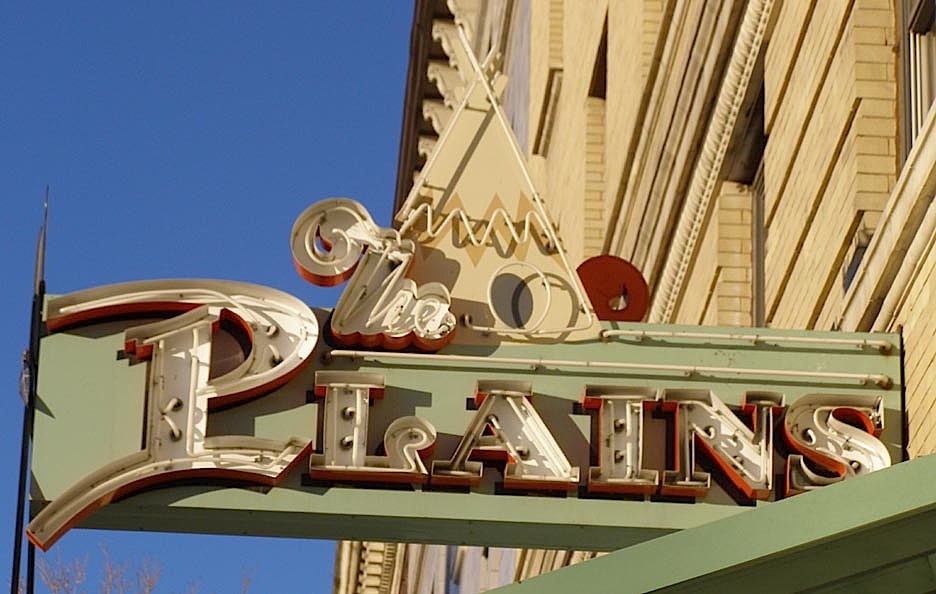 Another
feature
that
evokes The Plains’ storied past is its furnishings. In 1933, the
hotel added some chairs and sofas and other details created by Cody,
Wyoming’s
world-renowned furniture designer, Thomas Molesworth. Many of his
original
museum-worthy pieces are still in use here in the Hotel. The
Plain’s 1930’s style ground floor dining room, the Capital Grille, bills itself
as “the coolest restaurant and bar in downtown Cheyenne.” The menu
offers a
little something for everyone including “the best prime rib in town,”
and
several seafood selections, all at reasonable prices.
Another
feature
that
evokes The Plains’ storied past is its furnishings. In 1933, the
hotel added some chairs and sofas and other details created by Cody,
Wyoming’s
world-renowned furniture designer, Thomas Molesworth. Many of his
original
museum-worthy pieces are still in use here in the Hotel. The
Plain’s 1930’s style ground floor dining room, the Capital Grille, bills itself
as “the coolest restaurant and bar in downtown Cheyenne.” The menu
offers a
little something for everyone including “the best prime rib in town,”
and
several seafood selections, all at reasonable prices.
I
ordered the quesadilla, which came in
a heaping serving large enough for 2 or 3 of even the hungriest
cowpokes. (The
restaurant’s wine list was rather modest and it might be worth my
mentioning
that this was the first of three other restaurants in Cheyenne where I
asked
the wait person for a glass of chianti and received a totally confused
look
that seemed to be saying: “And where did you park your flying saucer,
sir?”)
Some
of the celebrity guests through the years at The Plains Hotel have
included
President Harry S. Truman, and Presidential candidates Richard Nixon,
Ronald
Reagan and Ted Kennedy. There were also a number of movie stars who
stayed at
The Plains—Jimmy Stewart, Karl Malden, Gilbert Roland, Sal Mineo and
Carroll
Baker, among others.
If
you
stay
at
The
Plains,
shopping,
dining
and
museums
are
all
in
easy
walking
distance,
and
guided
trolley
and
buckboard
tours depart just across the
street.
All the rooms
were booked at The Plains, so I spent my week at one of the Little
America affiliate hotels,  just
a
10-minute
drive
from
downtown
Cheyenne.
It’s
a
comfortable
residence
where
you
can
drift
off
to
sleep
to
the
sad,
romantic sounds of the train
whistles, as
Union Pacific still runs numerous freight trains through this town
throughout
the day.
just
a
10-minute
drive
from
downtown
Cheyenne.
It’s
a
comfortable
residence
where
you
can
drift
off
to
sleep
to
the
sad,
romantic sounds of the train
whistles, as
Union Pacific still runs numerous freight trains through this town
throughout
the day.
Where The Buffalo Roam--The
day
before
the
Frontier
Days’
rodeo
extravaganza
began,
I
visited
the
nearby
Terry Bison
Ranch where you have a chance to get up-close-and-personal
with their buffalo
herd. You’re driven out onto the pasturelands in a wonderfully rickety
little,
hand-built train and supplied with a bag of “bison treats.” The moment
the
train stops, a big, shaggy herd of about a dozen buffalo surrounds you,
eager
for their goodies. You get a real sense of just how big and imposing
these
beasts are when you’re literally a few feet from them. They aren’t
especially
human-friendly, so you’re advised not to try to touch or pet them.
The Ranch also
offers
RV
sites,
cabins
and
campsites.
There
are
daily
trail-rides,
and
animal
attractions
for
kids.
As
a
memento, you can have your photo
taken
dressed in old-fashioned cowboy garb and framed as a Wanted Poster.
I
had lunch at the Ranch’s Senator’s
Steakhouse and Brass Buffalo
Saloon where they offer both beef and buffalo meats. I tried the
“buffalo
bratwurst” and found it to be tender and juicy, but I could not notice
any
difference from most other bratwursts I’ve had. In general, I found
buffalo
meat to be flavorful but just slightly milder tasting than regular beef.
Although
there’s a predominance of funky
old western type cowboy saloons in Cheyenne, there are some
alternatives like
the Suite 1901 Martini Bar which
offers
an
interesting
tapas
menu
along
with
an
array
of
crazy
cocktail
concoctions
in
a
more
sophisticated,
urban
atmosphere.
Big
Dinner
at
the
Little
Bear--One
night
I
took
a
20-minute
drive
out
to
The
Little Bear Inn for dinner. This popular,
unassuming roadside restaurant opened in the 1870's
for
people traveling north by stagecoach to the Black Hills to mine for
gold. But
the growth of the rail lines marked the end of the stagecoach route in
1887.
The
Little
Bear
Inn’s
next
life
was
as
a
gambling
hall,
saloon
and
restaurant.
Legend
has
it
that
a
tunnel
once extended from under the saloon to the
horse
barn, 100 feet from the inn. When a posse seeking an outlaw arrived at
the inn,
the saloon’s trap door was opened, and the outlaw could escape at the
other
end, or stay in the tunnel until the posse left. How’s that
for a hotel accommodation? I sampled
my
first “Rocky Mountain Oyster” here but all I could taste was the overly
salty
breadcrumb batter it had been dredged in. Other offerings include
Alaskan king
crab; catfish; and walleye pike. All Little Bear’s beef entrees are
aged and hand-cut in-house. All portions are hefty and side
dishes more than filling.
Down-to-Earth
Breakfast at The Luxury Diner—Perhaps no
place in
Cheyenne embodies the unpretentious, keepin'’-it-real cowboy style
quite
like
the Luxury Diner and Motel at
1401-A West Lincolnway. From 1896 to 1912, the
Diner was an operating trolley car in the Capitol City. It’s been a
working
diner since 1926. Folks say you really should not leave Cheyenne
without having
one of their cheeseburgers.
The
Diner’s interior is full of kitschy railroad and trolley memorabilia.
Tables
are small and close together, and despite its self-proclaimed title of
“luxury,”
there’s nothing the least bit luxurious here. I enjoyed their
sunnyside-up eggs
and corned beef hash. They also offer an array of pancakes, omelets and
breakfast burritos. Not surprisingly, the Luxury has no web site but
they’re
easy to find on-line.
Where
to Go in Medicine Bow— 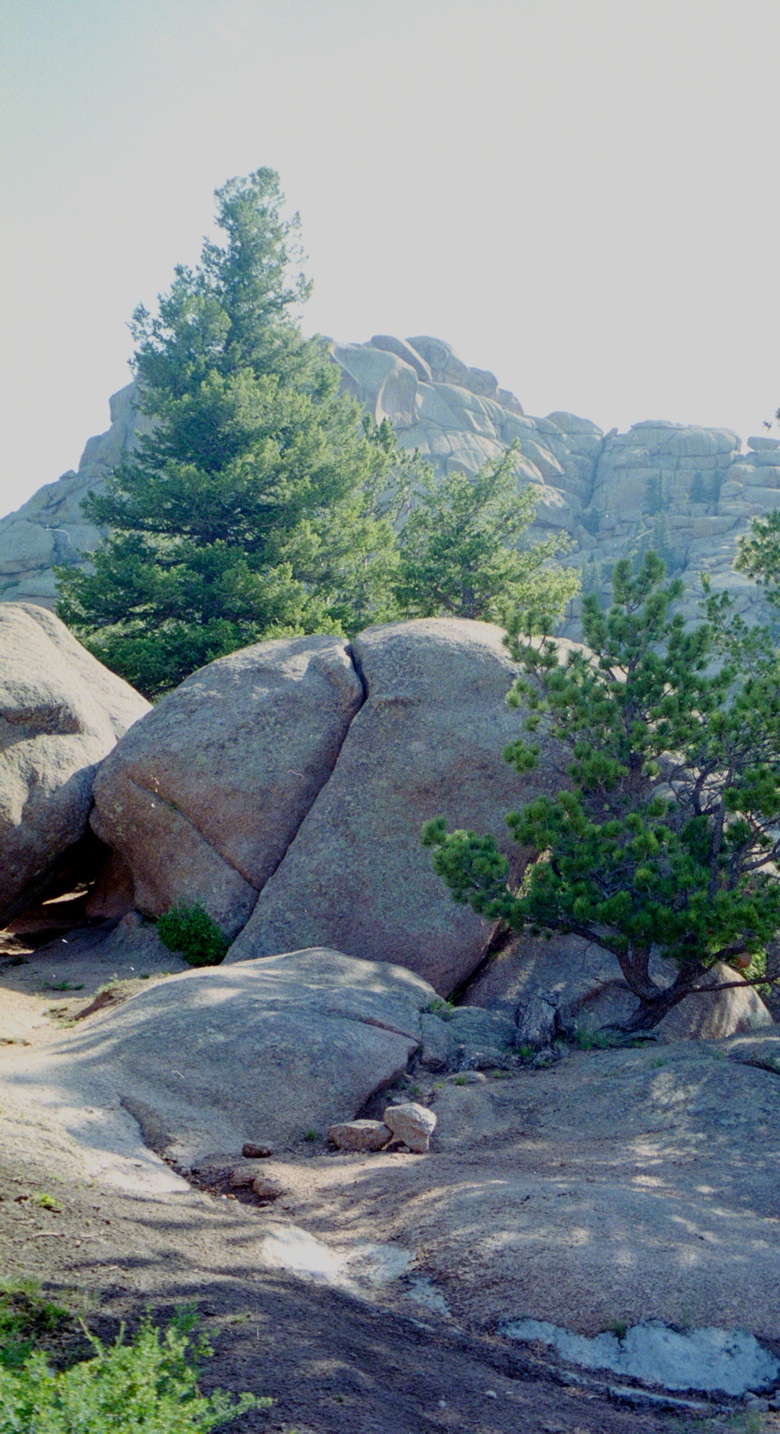 The term “Vedauwoo”
means
“land
of
the
earthborn
spirit”
in
the
Arapaho
language.
It’s
the
name
of
a
magical 250-acre park (right)
made
up
of ancient rounded, rocky outcroppings
located in the Medicine Bow area near the city of Laramie. Known as a
great "wide crack climbing spot,” Vedauwoo offers a breathtaking,
tranquil, high
mountain setting where climbers and hikers can really “get vertical.”
There are
over 900 climbing routes currently here, for different experience
levels. I
watched in amazement as a quintet of climbers rappelled down the face
of one of
the shear rock faces. (No safety nets here. You’re on your own.)
The term “Vedauwoo”
means
“land
of
the
earthborn
spirit”
in
the
Arapaho
language.
It’s
the
name
of
a
magical 250-acre park (right)
made
up
of ancient rounded, rocky outcroppings
located in the Medicine Bow area near the city of Laramie. Known as a
great "wide crack climbing spot,” Vedauwoo offers a breathtaking,
tranquil, high
mountain setting where climbers and hikers can really “get vertical.”
There are
over 900 climbing routes currently here, for different experience
levels. I
watched in amazement as a quintet of climbers rappelled down the face
of one of
the shear rock faces. (No safety nets here. You’re on your own.)
At
night,
owing
to
its
high
elevation
and
distance
from
cities,
Vedauwoo
is
also
a
favorite
of
star-watching
enthusiasts.
Vedeauwoo
has
several
day-use picnic sites and an overnight campground. This
enchanting
park is also popular with mountain bikers, anglers, cross-country
skiers, and
snow-shoers.
Dinner
and
a
Show— If
you’d
like
to
experience
Cheyenne
family
style
hospitality
at
its
most
endearing,
wend
your
way
up
into
the
foothills
to
the Bit-O-Wyo
Ranch just a short drive
from town. Here Ranch owner Dennis Steele and his multi-generational
family
will treat you to an evening of song, laughter, Bar-B-Que and
friendship.
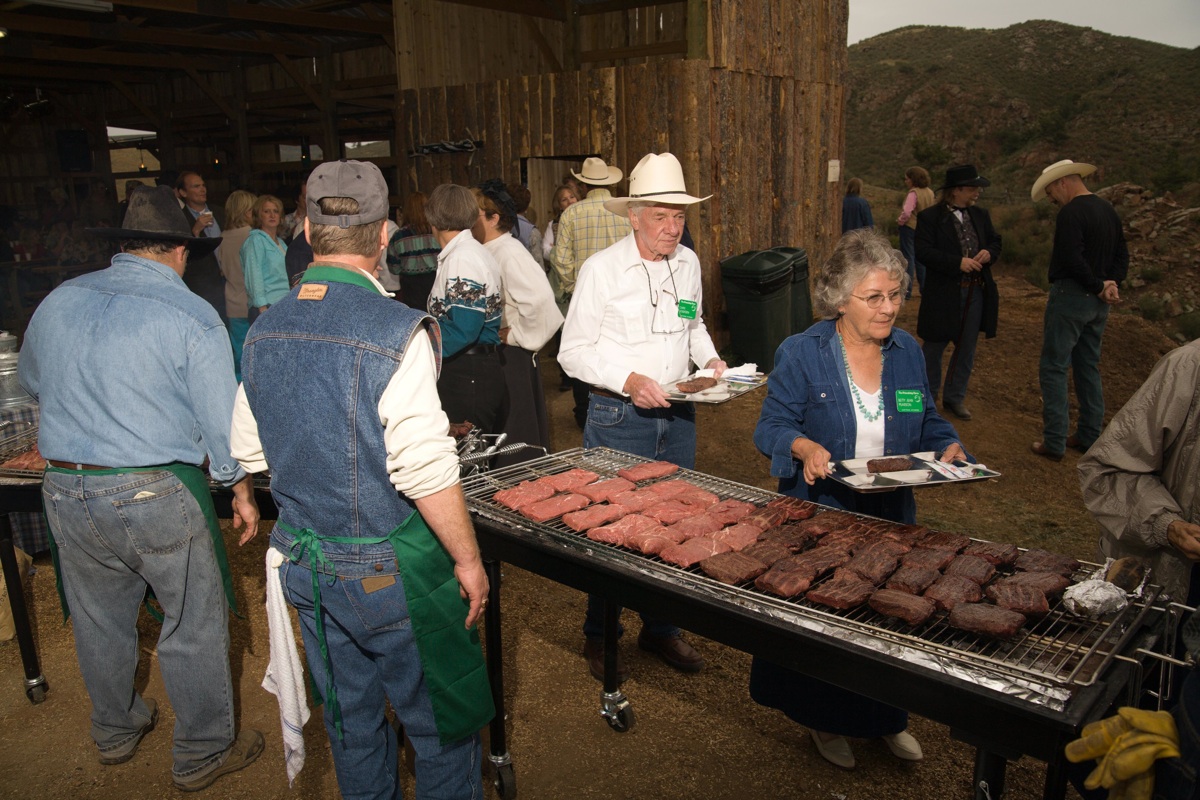 During the day you
can come here for a guided trail ride aboard one of the Ranch’s
beautiful (and
beautifully behaved) horses. The mountain scenery is classic. Dismount and come on up to the
horse
barn around 6:30 pm and take your place in the “chuck wagon line" (left), where they’ll
serve you a grilled, cowboy steak dinner accompanied by some BIT-O-WYO
baked
beans, applesauce and some “whistle wetter.” It’s all very informal
dining at
picnic tables right alongside the horse stalls where you can hear the
mustangs
munching their hay along with you. Around
7:30 “the cowboy show” begins. Three generations of the Steele family,
loosely
led by Dad/Head Wrangler/MC, Dennis, take the stage to sing cowboy
songs, both
traditional and original, tell jokes, and make you feel like you’re in
their
living room for an evening of family fun. Dinner
and show is $40 per person and kids under 7 are free.
During the day you
can come here for a guided trail ride aboard one of the Ranch’s
beautiful (and
beautifully behaved) horses. The mountain scenery is classic. Dismount and come on up to the
horse
barn around 6:30 pm and take your place in the “chuck wagon line" (left), where they’ll
serve you a grilled, cowboy steak dinner accompanied by some BIT-O-WYO
baked
beans, applesauce and some “whistle wetter.” It’s all very informal
dining at
picnic tables right alongside the horse stalls where you can hear the
mustangs
munching their hay along with you. Around
7:30 “the cowboy show” begins. Three generations of the Steele family,
loosely
led by Dad/Head Wrangler/MC, Dennis, take the stage to sing cowboy
songs, both
traditional and original, tell jokes, and make you feel like you’re in
their
living room for an evening of family fun. Dinner
and show is $40 per person and kids under 7 are free.
A one-hour trail ride through
the Ranch’s rolling acreage is $35 per rider and “saddle times” are 10
am and
2 pm. Reservations are required for dinner and for trail rides.
“Leavin’
Cheyenne”—After
another
nice
barbecue
dinner
outside
on
the
breezy
Little
America
Hotel’s
patio,
I
headed
back
to
my
room
to
pack for departure the next day. In
the distance
I heard the wail of another freight train as it pulled out of the
downtown
depot heading west across miles of moon-lit plains. I thought about the
brief
but exhilarating times that sound had once brought to Wyoming’s capital
City,
and how this annual “Frontier Days Celebration” has re-captured that
euphoria
and built it into a piece of the Old West’s History that everyone can
experience and enjoy. It made me realize what a gift this event is to
anyone
who has ever watched a classic Western film and wondered what it felt
like to
ride the range and be a part of that unique and totally all-American
Cowboy
Culture.
CONGRATULATIONS
TO
ROBERT
MARIANI!
Robert Mariani, the author of this article and co-author with his
brother John Mariani of Almost Golden, was a finalist
in The New Yorker Magazine's Halekulani Travel
Tales Short Story Contest for his article "A Trip to the
Birthplace of Whiskey," which first appeared here in the April
15, 2007 issue of Virtual Gourmet.
~~~~~~~~~~~~~~~~~~~~~~~~~~~~~~
NEW YORK CORNER
by John
Mariani
Veritas
43 East 20th Street (near Park Ave.)
212-353-3700
www.veritas-nyc.com
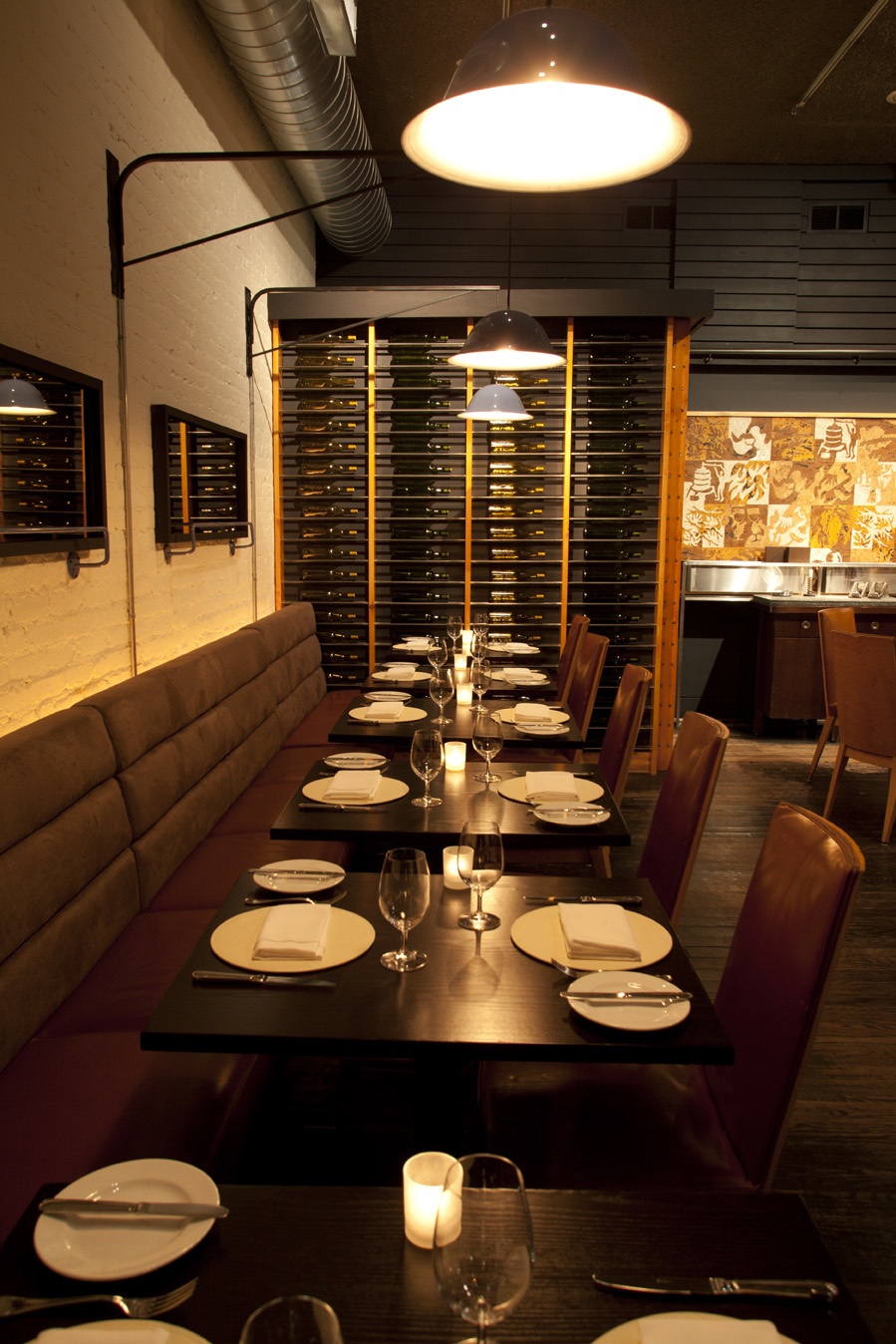 Back
in
1998,
when
enophilia
was
raging
in
the
land,
Park
B.
Smith
and
Gino
Diaferia
pooled their
considerable resources, which included the former's spectacular
personal wine
collection of nearly 200,000 bottles, to open Veritas (from the Latin
motto
"in vino veritas").
The intent was to have a modestly sized restaurant built around that
collection
and to match the food to it in the French-American style then coming
into
focus. It was no surprise that Veritas soon was winning awards for its
wine
cellar and the kitchen raves for its cuisine under Chef Scott Bryan,
who was
succeeded in 2008 by Frenchman Grégory Pugin, an eight-year
protégé of Joël
Robuchon.
Back
in
1998,
when
enophilia
was
raging
in
the
land,
Park
B.
Smith
and
Gino
Diaferia
pooled their
considerable resources, which included the former's spectacular
personal wine
collection of nearly 200,000 bottles, to open Veritas (from the Latin
motto
"in vino veritas").
The intent was to have a modestly sized restaurant built around that
collection
and to match the food to it in the French-American style then coming
into
focus. It was no surprise that Veritas soon was winning awards for its
wine
cellar and the kitchen raves for its cuisine under Chef Scott Bryan,
who was
succeeded in 2008 by Frenchman Grégory Pugin, an eight-year
protégé of Joël
Robuchon.
Then, quite suddenly, Veritas closed its doors, and
everyone
assumed it was another fine dining victim of the recession.
So when Veritas re-opened three months ago, gourmets were both
surprised and elated, not least because the chef is now also the owner,
the
redoubtable Sam Hazen, backed by investors that still include Smith as
well as
defense attorney Arthur Aidala. The wine list is smaller now, though
with
sommelier Rubén Sanz Romero (formerly at Public and The Fat
Duck) overseeing
3,000 labels, it is still probably the largest in the city. Its
terroir-driven
"Market List" of wines at $40-$145, with 46 half-bottles, also makes
Veritas far more appealing to those who are not necessarily
damn-the-expense
connoisseurs.
Hazen (below),
whose
lengthy
résumé
includes
La
Côte
Basque,
The
Quilted
Giraffe,
Tavern
on
the
Green,
and Tao, along with Chef de
Cuisine Alexander Williamson (formerly
at Compass, Morimoto, and Gramercy Tavern), has fashioned their menu
around
wine, with Sanchez joining in to make matches of food and bottles;
up front
at the bar there is a selection of wine-friendly small plates and
snacks that
include chicken liver
mousse, potatoes fried in duck
fact, Kobe bresaola with blue cheese walnuts, 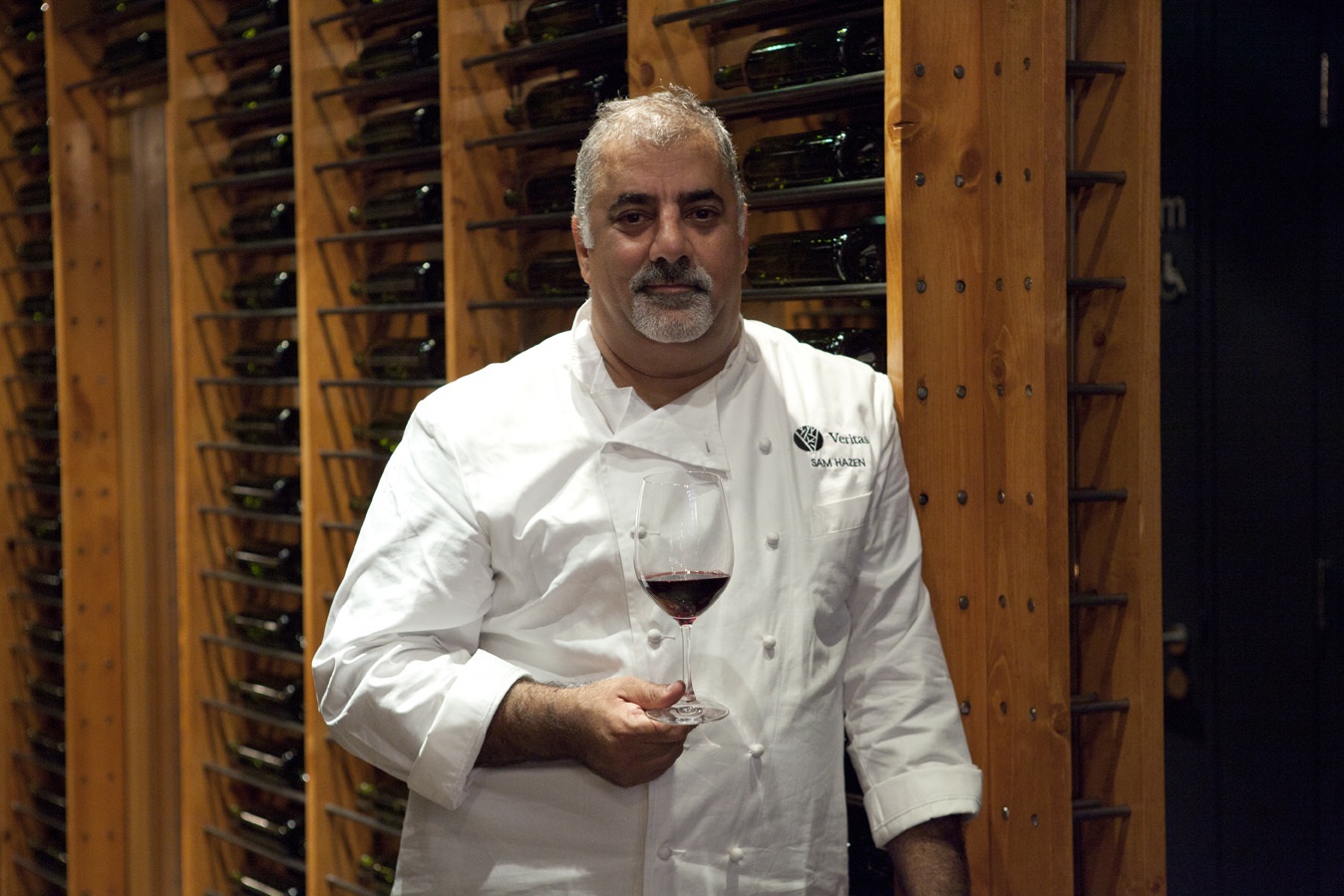 and
steak tartare.
and
steak tartare.
You pass by the gray slate bar, with its ten-seat
communal
table, and enter the dining room (above)
through
floor-to-ceiling
wine
racks.
The
room
hasn't
the
posh
of
its
former
days;
instead
it's more casual, with dark wood
floors, white
painted brick, Ultrasuede® banquettes, hanging pendant lamps, and
chalkboard-black walls accented with mirrors and cork artwork by artist
Julien
Gardair. The wooden tables have white placemats. The sound level
is
graciously civilized. This is a place to dine with people who
like to
enjoy their friends' company.
Our party of four began with a black lentil soup
enriched
with a scrumptious profiterole of Jamón Ibérico. Light
and delicate
crab salad
is tangy-sweet with lemon jam, black olives, and arugula, while beets
come with
the predictable accompaniment of goat's cheese, pistachios, and
the bite
of horseradish. The "market crudo" of fish is, obviously, based
on what's best that day, served with citrus and pomegranate for both
sweetness
and textural crunch.
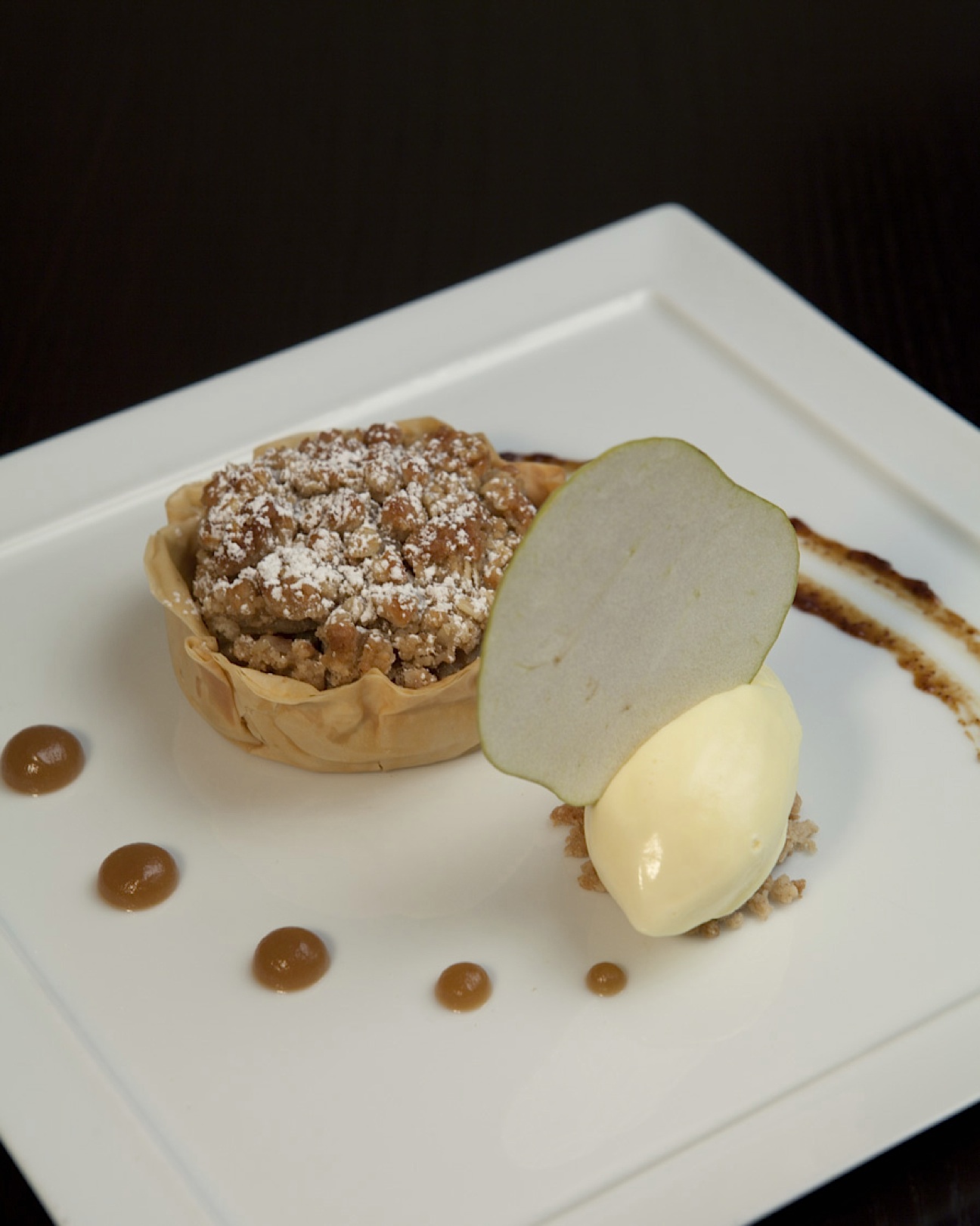 Every
entree
scored
high,
from
seared
sea
scallops
with
roasted
cèpes,
sunchoke
puree,
and
lush
foie
gras
to a maple-brined "wooly pig" with charred tomato and
wilted butter lettuce. Niman Ranch loin of lamb is good, with tarbais
beans
and a lustrous minestrone broth but best of all is the short rib raviolo--one big raviolo--with oyster
mushroom and pickled red onions. This is a
good-sized raviolo, but
however big it might be, it is so delicious that you'll want
another.
Every
entree
scored
high,
from
seared
sea
scallops
with
roasted
cèpes,
sunchoke
puree,
and
lush
foie
gras
to a maple-brined "wooly pig" with charred tomato and
wilted butter lettuce. Niman Ranch loin of lamb is good, with tarbais
beans
and a lustrous minestrone broth but best of all is the short rib raviolo--one big raviolo--with oyster
mushroom and pickled red onions. This is a
good-sized raviolo, but
however big it might be, it is so delicious that you'll want
another.
Note well how every dish is composed of very few
ingredients (master chef Joël Robuchon always said more than three
is too
many), and nothing is extraneous on the plate. This is well-focused
cuisine
refined to its sharpest flavors.
You could have a fine array of cheeses at Veritas, but
you won't
want to miss Pastry Chef Emily Wallendjack's desserts, chosen,
like all
else here, according to the seasons, so right now she's
doing an
heirloom apple crisp with cinnamon
and crème fraîche ice cream (left), and a goat’s milk panna cotta with Port-glazed figs and local honey.
The truth of the matter about
Veritas is
that it has been wholly transformed in décor and cuisine, and
even
those who
cherished the original cannot help to be but impressed by all that
Hazen has
brought to the table here.
Veritas is open for dinner only nightly. Appetizers run $11-$19, main courses $24-$39. Bar menu $5-$16.

MAN ABOUT TOWN
by
Christopher Mariani
Cola’s
148
8th Avenue
NYC, NY
212-633-8020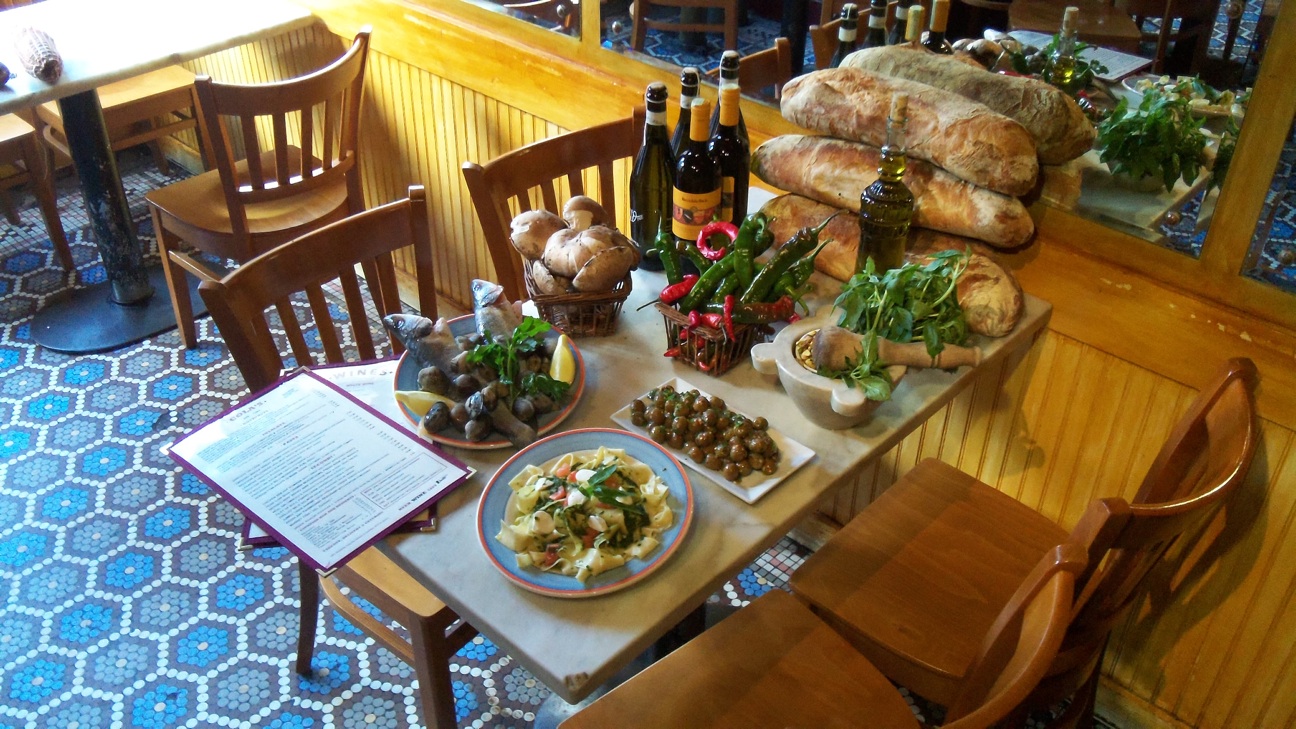
The
dictionary
definition
of
"old
fashioned"
is
"a
style
or
method
formerly
in
vogue,
outdated;
describing someone or something attached
to or
favoring methods or ideas." In that case, Cola’s in Chelsea is
definitely an old
fashion restaurant, opening its doors in 1988 and today still holding
onto
those so-called outdated
methods. The shelf
life of most restaurants in NYC is a
mere couple of years, so for Cola’s not only to survive but thrive for
over
two decades is a true accomplishment. Twenty-two years later, original
owner
and chef Nick Accardi still walks the petite dining room,
seating
around 40 guests at max, chats with local customers, rolls up his
sleeves to
cook nightly and even heads back to Sicily every year to pick up his
olive oil
(made from Nocellera
olives) used in the restaurant. Cola’s is one of few old remaining
neighborhood
restaurants left in Chelsea, which has become so expensive for
small-time
restaurants to operate and larger ones flair up then cool down
quickly. Yet Accardi has found a way to stay open
and prosper.
There’s only one main room at Cola’s, with a blue-and-white tiled floor, white marble tables, wooden chairs and a small waiter’s station topped with tall pepper mills, a few bottles of wine, and an espresso/cappuccino maker. Like the restaurant, the wine list is very small, comprised of a handful of red and white wines, just one label for each listed varietal, an area that Cola’s might easily improve on.
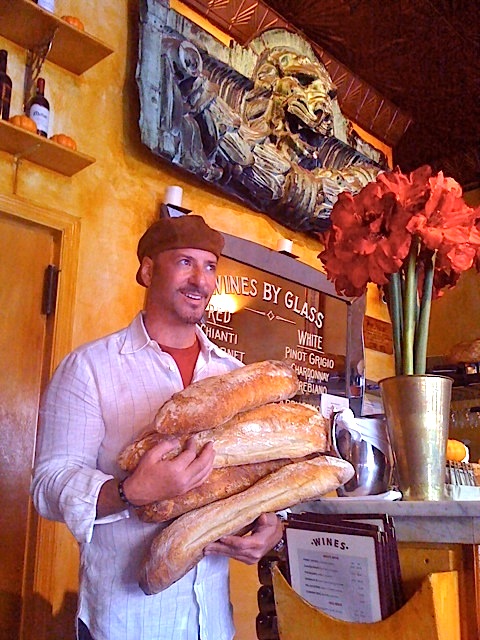 The
food is a blend of regional Italian and Italian-American dishes with a
Sicilian touch, and like many NYC Italian restaurants, the
pasta dishes trump all. Homemade pappardelle
comes to the table steaming, topped with a hearty wild mushroom veal ragù
while the marble-sized potato gnocchi
are coated by a creamy spinach
and gorgonzola dolce sauce.
The pasta portions are generous, easily enough for an
entire meal, but also perfect as a starter when shared. Other notable
appetizers are the grilled Portuguese octopus served with roasted
potatoes in a
wild fennel vinaigrette, drizzled with olive oil and the cremini
mushrooms stuffed with chopped prosciutto and roasted pine nuts. Meat
and fish
dishes include a veal saltimbocca, braised short ribs, filet of sole
Pantelleria (named after an island off Sicily, famous for its capers)
and a local market fish cooked to your liking. There are also
nightly specials, one dish for each night of the week.
The
food is a blend of regional Italian and Italian-American dishes with a
Sicilian touch, and like many NYC Italian restaurants, the
pasta dishes trump all. Homemade pappardelle
comes to the table steaming, topped with a hearty wild mushroom veal ragù
while the marble-sized potato gnocchi
are coated by a creamy spinach
and gorgonzola dolce sauce.
The pasta portions are generous, easily enough for an
entire meal, but also perfect as a starter when shared. Other notable
appetizers are the grilled Portuguese octopus served with roasted
potatoes in a
wild fennel vinaigrette, drizzled with olive oil and the cremini
mushrooms stuffed with chopped prosciutto and roasted pine nuts. Meat
and fish
dishes include a veal saltimbocca, braised short ribs, filet of sole
Pantelleria (named after an island off Sicily, famous for its capers)
and a local market fish cooked to your liking. There are also
nightly specials, one dish for each night of the week.
Desserts are very traditional,
all made in house; the moist tiramisù and lemon ricotta
cheesecake are among
the best.
There
is a personal and, given its size, cozy intimacy to Cola’s that
is fading from Manhattan
restaurants, a rare
quality and style that may be considered old fashioned but is certainly
much
enjoyed at a time of raucous restaurants and impersonal service.
The secret to Cola's success may well be in its being true to itself.
Open daily for dinner, lunch Mon-Fri. Antipasti $6.95-$9.75, pasta $11.95-$14.95, and meat and fish dishes $15.95-$18.95.
``````````````````````````````````````````````````
NOT
TO
MENTION
FURTHER
STUNTING HIS GROWTH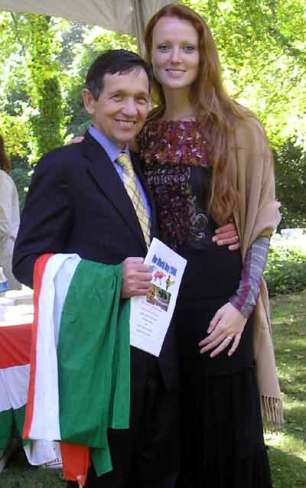
Rep. Dennis Kucinich (D-Ohio) is suing
several companies
affiliated with a House office building cafeteria for $150,000
for
negligence over an "unfit and unwholesome" sandwich wrap he bought in
April 2008 that contained an olive pit that caused him "sustained
serious and permanent dental and oral injuries requiring multiple
surgical and
dental procedures, and has sustained other damages as well, including
significant pain, suffering and loss of enjoyment."
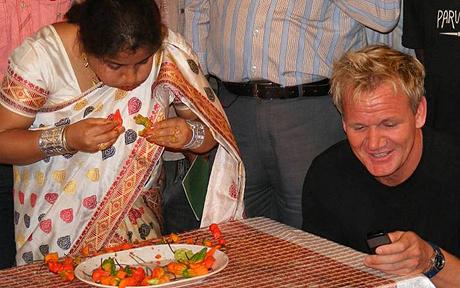 PLEASE DO
PLEASE DO"The restaurant uses one of the most awkward slogans I have ever heard: `Something hot coming to your mouth.' Mind you, the restaurant’s name is Pho 69. Is that improper syntax or a deliberate, but ill-advised, attempt at a double entendre? I think I’ll just leave it there." Stett Holbrook, "First Street Pho," San Jose.com (1/12/11)
QUICK BYTES
✉ Guidelines for submissions: QUICK BYTES publishes only events, special dinners, etc, open to the public, not restaurant openings or personnel changes. When submitting please send the most pertinent info, incl. tel # and site, in one short paragraph as simple e-mail text, WITH DATE LISTED FIRST, as below. Thanks. John Mariani
* The Virtual
Gourmet's John Mariani will
be
appearing
at
an
author's
dinner
at
Trattoria Lucca in Charleston, SC, next Wed.,
March 2, hosted by chef-owner Ken Vedrinski. Call 843-973-3323;
www.luccacharleston.com. . . . .John
Mariani will also be giving a cooking demo at the Charleston Food &
Wine Festival on Friday, March 4, and an author's signing on
Sat. March
5. For info click
here.
* Throughout
March, Roof Terrace Restaurant
in Washington, DC will
offer prix-fixe, three course authentic Indian menus
as part of the
Kennedy Center’s maximum INDIA festival. Twelve chefs from India,
led by
Chef Hemant Oberoi, Executive Grand Chef of the Taj Mahal Palace &
Tower in
Mumbai, will fly in for a culinary collaboration with Roof Terrace’s
Executive
Chef Joe Gurner. $65 pp. Call 202-416-8555 or
visit www.roofterracerestaurant.com
* From Feb. 28-March 4, authentic Sicilian cuisine comes to New York’s iconic '21' Club. Executive Chef Luca Orini
and his team from the Grand Hotel Timeo & Villa Sant'Andrea in
Sicily will take over '21' for one week only, offering a special menu
in the '21' Bar Room, a Winemaker's Dinner Series featuring Cottanera
wines and a cooking class with Chef Luca. 212-582-7200 or visit 21club.com/web/onyc/sicily_2011.jsp.
* On March 14
in NYC, the 9th Annual Taste of Greenwich House
will welcome 40 of NY’s finest restaurants as they serve up tastes from
the
kitchen in support of the variety of urban social service and art
programs
offered through Greenwich House. Featured chefs from restaurants will
be in
attendance. General Admission $125pp., VIP $200pp. Call 212-991-0003 or
visit www.greenwichhouse.org/taste2011.
* On March 12, The 3rd Annual NJ Food & Wine Festival at Crystal
Springs in Hamburg NJ,
holds a series of wine and spirits events, including
a seminar on rare boutique and cult wines, tastings of wines from
Italy, France
and New Zealand, a scotch tasting and a cocktail pairing event. The
evening's
Grand Tasting brings together 30 wineries and 20 NYC and NJ restaurants
including Tribeca Grill, Oceana, CulinAriane, Pluckemin Inn, Plein Sud,
Restaurant Serenade, Strip House and more. Individual events from $30 -
$95.
Call 973-827-5996 ext 3 or visit NJFoodWineFest.com njfoodwinefest.com
.
*
On Mar. 17, in Palm
Springs, CA, La Quinta Resort
& Club’s TWENTY6 restaurant Tips a Hat
to St. Patrick’s Day with offerings of Irish Lamb Stew or Corned Beef
&
Cabbage with Bouillon Potatoes, and green beer. Both dinner specials
are $21
pp. . . . On Mar. 31,
TWENTY6 restaurant will host a California Craft Beer Dinner
with beers from the award-winning North Coast Brewery. A
representative
from the brewery and a distributor from Wine Warehouse will attend the
dinner
to discuss beer attributes. $49 pp. Call 760-564-5720 or visit laquintaresort.com.
* On March 18
&19 The 7th Annual Savor Dallas,
a
celebration
of
wine,
food,
spirits
and
the
arts
returns
to
downtown
Dallas
and
The
Arts
District.
Featuring over
60 of Dallas-Fort Worth’s
top chefs serving samples of their cuisine and more
than
400 premium wines, spirits and imported beers, new events this year
incl. a cooking class
with Chef Stephan Pyles, a wine and cheese pairing
session with Mozzarella Company cheese czar Paula Lambert at The
Mansion on
Turtle Creek, and The Ultimate Friday Night pARTY featuring the work of
area
artists at Gables Park 17. Individual event ticket prices range from
$35 to
$125 and are available at savordallas.com. Call
888/728-6747.
* Chef-owner Riccardo Ullio of Sotto Sotto is honoring his restaurant’s 12th anniversary by hosting four-course prix fixe wine dinners inspired by 12 different regions of Italy, one evening per month, complemented by wine pairings reflecting the specific region featured. $65 pp and $85 with wines. Call 404-523-6678 or vurestaurants.net.
````````````````````````````````
Everett Potter's Travel Report:

~~~~~~~~~~~~~~~~~~~~~~~~~~~~~~~~~~~~~~~~~~~~~~~~~~~~~~~~~~~~~~~~~~~~~~~~~~
Eating Las Vegas is the new on-line site for Virtual Gourmet contributor John A. Curtas., who since 1995 has been commenting on the Las Vegas food scene and reviewing restaurants for Nevada Public Radio. He is also the restaurant critic for KLAS TV, Channel 8 in Las Vegas, and his past reviews can be accessed at KNPR.org. Click on the logo below to go directly to his site.
~~~~~~~~~~~~~~~~~~~~~~~~~~~~~~~~~~~~~~~~~~~~~~~~~~~~~~~~~~~~~~~~~~~~~~~~~~~
Tennis Resorts Online: A Critical Guide to the World's Best Tennis Resorts and Tennis Camps, published by ROGER COX, who has spent more than two decades writing about tennis travel, including a 17-year stretch for Tennis magazine. He has also written for Arthur Frommer's Budget Travel, New York Magazine, Travel & Leisure, Esquire, Money, USTA Magazine, Men's Journal, and The Robb Report. He has authored two books-The World's Best Tennis Vacations (Stephen Greene Press/Viking Penguin, 1990) and The Best Places to Stay in the Rockies (Houghton Mifflin, 1992 & 1994), and the Melbourne (Australia) chapter to the Wall Street Journal Business Guide to Cities of the Pacific Rim (Fodor's Travel Guides, 1991).

The Family Travel Forum
- A community for those who
"Have Kids, Still Travel" and want to make family vacations more fun,
less work and better value. FTF's travel and parenting features,
including
reviews of tropical and ski resorts, reunion destinations, attractions,
holiday
weekends, family festivals, cruises, and all kinds of vacation ideas
should be
the first port of call for family vacation planners. http://www.familytravelforum.com/index.html;
THIS WEEK: Panama City,
Veneto.
ALL YOU NEED BEFORE YOU GO

nickonwine: An engaging, interactive wine column by Nick Passmore, Artisanal Editor, Four Seasons Magazine; Wine Columnist, BusinessWeek.com; nick@nickonwine.com; www.nickonwine.com.

MARIANI'S VIRTUAL GOURMET NEWSLETTER is published weekly. Editor/Publisher: John Mariani.
Contributing Writers: Christopher
Mariani, Robert Mariani,
John A. Curtas, Edward Brivio, Mort
Hochstein, Suzanne Wright, and
Brian Freedman. Contributing
Photographers: Galina Stepanoff-Dargery, Bobby Pirillo. Technical
Advisor:
Gerry McLoughlin.
Any of John Mariani's books below
may be ordered from amazon.com by clicking on the cover image.
 My
newest book, written with my brother Robert Mariani, is a memoir of our
years growing up in the My
newest book, written with my brother Robert Mariani, is a memoir of our
years growing up in the For those of you who don't think of the Robert and I think you'll enjoy this very personal look at our --John Mariani |
 |
 |
 |
 |
 |
 |
© copyright John Mariani 2011
